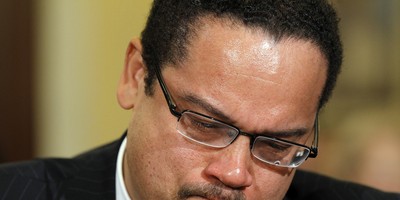If you look at the historical tables attached to President Barack Obama's latest budget proposal, they say the federal government took in $2.165 trillion in revenues in fiscal 2010 and spent $3.720 trillion, leaving a federal deficit of approximately $1.555 trillion.
This looks like a horror story, of course. Yet the true story is more horrible. To find that story, you have to look at the financial statements quietly posted by the U.S. Treasury on the website of the Financial Management Service. These documents show the actual accounting for the federal government in much the same way your bank statements show the actual accounting for your household.
The Daily Treasury Statement published on Sept. 30, 2010 -- the last day of fiscal year 2010 -- itemized all the revenue the government received in that fiscal year and all the money it spent.
True federal spending for fiscal 2010, the Treasury statement said, was $11.5 trillion ($11,537,305,000,000.00).
Now, how can the White House budget claim federal spending was only $3.720 trillion in fiscal 2010, when the Treasury says it was $11.5 trillion?
The biggest reason is because the spending tables produced by the Office of Management and Budget to accompany the White House budget do not count the money the Treasury is obligated to disburse in any given fiscal year to pay off old Treasury securities -- that is, old loans -- that come due in that year.
In fiscal year 2010, according to the Treasury statement, $7.207 trillion ($7,206,965,000,000.00) in loans came due. Paying off old loans is by far the greatest annual expense the federal government faces.
Recommended
After the $7.207 trillion the Treasury spent paying off old loans in fiscal 2010, the next two greatest expenses were federal entitlement programs. Treasury spent $571.5 billion paying Social Security benefits, and $513.7 billion paying Medicare benefits. The fourth greatest federal expense was paying defense contractors, who earned $399.1 billion for the year.
So, where did the government find $11.5 trillion to pay its bills?
The vast majority of it did not come from taxes. During fiscal 2010, the government brought in $2.038 trillion ($2,037,686,000,000.00) in tax revenue, including all individual and corporate income taxes, all payroll taxes, all excise taxes, and all estate and gift taxes. At the same time, according to the Treasury, the government paid out about $467.9 billion in tax refunds, leaving net federal tax revenues at about $1.5697 billion. If you also subtract that $467.9 billion in tax refunds from the government's disbursements, that leaves a little over $11 trillion in spending.
That means the federal government's expenditures of a little more than $11 trillion in fiscal 2010 -- not counting tax refunds -- were about seven times the federal government's net tax receipts of $1.5697 trillion.
Where did the Treasury get the additional money it needed? It borrowed even more than the $7,207 trillion in loans it paid off.
In fact, according to the Treasury, the government took out $8.6492 trillion($8,649,171,000,000.00) in new loans in fiscal 2010, by selling new Treasury securities in that amount.
Now, if you think that is the end of this horror story, you are wrong. It is only the beginning.
Just as important as the dollar amount of these loans are the dates on which they will come due.
Of the 7.207 trillion in loans the government paid off in fiscal 2010, $6.220 trillion were short-term Treasury bills that had matured in one year or less. Another $795 billion were Treasury notes that had carried terms ranging from two years to 10 years.
Of the $8.6 trillion in new loans the government took out in fiscal 2010, about $6 trillion were in Treasury bills that will come due in fiscal 2011 -- that is, before September 30 of this year -- and another $2.2 trillion were in Treasury notes that will come due in the next two to 10 years.
Our federal government is an exhausted man desperately treading water in a deep sea of debt.
Erskine Bowles, a Democrat who served as chief of staff to President Bill Clinton and as co-chair of President Barack Obama's National Commission Fiscal Responsibility, stated the plain truth to the Senate Budget Committee last month.
"I think we face the most predictable economic crisis in history," he said.
"It may be two years, you know, maybe a little less, maybe a little more," said Bowles. "But if our bankers over there in Asia begin to believe that we're not going to be solid on our debt, that we're not going to be able to meet our obligations, just stop and think for a minute what happens if they just stop buying our debt."
Maybe then they will shut down our government whether we like it or not.

























Join the conversation as a VIP Member